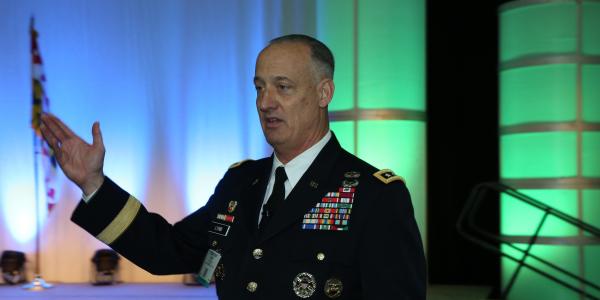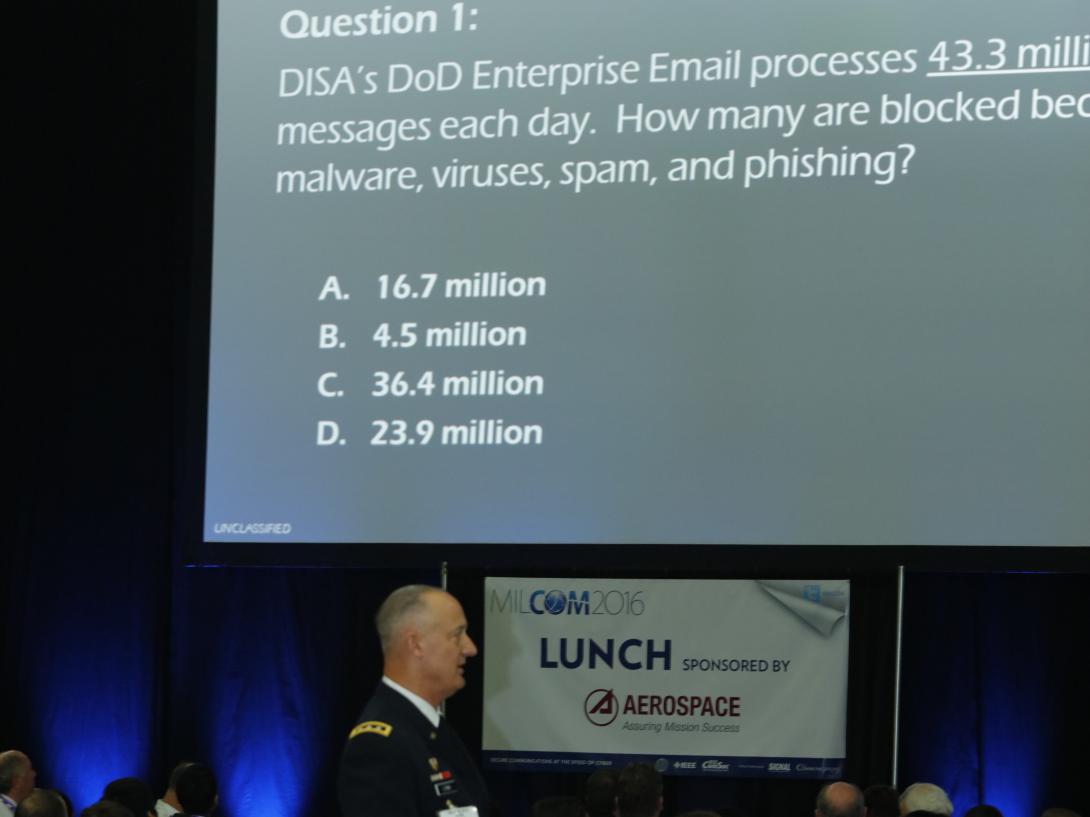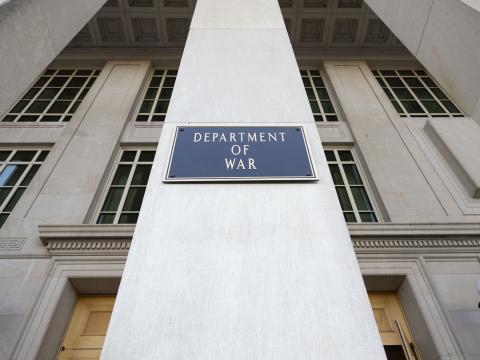Modern Warfighters Need Modern Military Communications
Military communications need to keep up with the needs of the modern warfighter while still protecting against cyberthreats. That was the message during the first day of of MILCOM 2016, a three-day international conference for military communications. This year's theme, Securing Communications at the Speed of Cyber, digs into the competing priorities of speed, security and cost amid emerging challenges. The conference runs November 1-3 at the Baltimore Convention Center and is co-hosted by AFCEA International and the Institute of Electrical and Electronics Engineers, or IEEE.
In the future, technology will allow troops to conduct battles from a smartphone or tablet, said Lt. Gen. Alan Lynn, USA, director of the Defense Information Systems Agency, or DISA, during the event.
Innovations for tomorrow to secure military networks will center on software defined networking, @USDISA says at #MILCOM
— Sandra Jontz (@jontz_signalmag) November 1, 2016
But cybersecurity is an important part of the future of warfighting. “When you build the network, if you build it right, then the other side of my hat that I wear, the cyber side, is a lot better,” said Gen. Lynn, who also serves as commander of Joint Force Headquarters, Department of Defense Information Networks.
More and more of the economy is based in #cyberspace, as are threats. "The attacks are going to keep coming, @USDISA's Lynn says #MILCOM
— Sandra Jontz (@jontz_signalmag) November 1, 2016
He added, “I’m talking about defending a domain—no different than land, sea and air. But it’s a new domain, and we’re still trying to figure out fighting in the cyber domain.”
As @USDISA improves networks, what they really need from industry is analytics, LTG Alan Lynn says at #MILCOM
— Sandra Jontz (@jontz_signalmag) November 1, 2016
During a panel at the conference, speakers said the goal for network modernization should be for smaller, simpler and standardized systems.
It should not take a squad of signal officers to reconfigure a system; nor should mission command systems have different interfaces, said Brig Gen. Karl Gingrich, USA, deputy program executive officer (PEO) for Operations, Readiness and Fielding for PEO-Command, Control and Communications-Tactical (PEO-C3T).
.@DeptofDefense needs #automation, standardization to help modernize network, BG Kurt Gingrich says #MILCOM
— Sandra Jontz (@jontz_signalmag) November 1, 2016
Kenneth Bible, the U.S. Marine Corps' deputy chief information officer deputy director of command, control, communications and computers (C4) said during the same panel that nearly two decades of war led the service to blur the lines between garrison and tactical networks as the service worked to give troops the technology they needed on the battlefield.
Developing trends in modernizing networks include the evolution of #SDN and network function virtiualization, @USMC's Kenneth Bible #MILCOM
— Sandra Jontz (@jontz_signalmag) November 1, 2016
During a technical session, panelists discussed how the U.S. Defense Department wants more of its military systems to operate autonomously, capable of independently determining the right course of action no matter the situation. The Defense Science Board predicts the department will get there.
Communication limitations means that 'space is being pushed into autonomy - it’s not pulling it,' Dr. Redfield @USNRL #MILCOM
— Sandra Jontz (@jontz_signalmag) November 1, 2016
Autonomous systems can address several challenges, ranging from filling the need for systems that can make quick decisions to optimally processing the vast volumes of data constantly being generated to being used in lieu of people for dangerous missions and address persistence and endurance concerns.






Comments